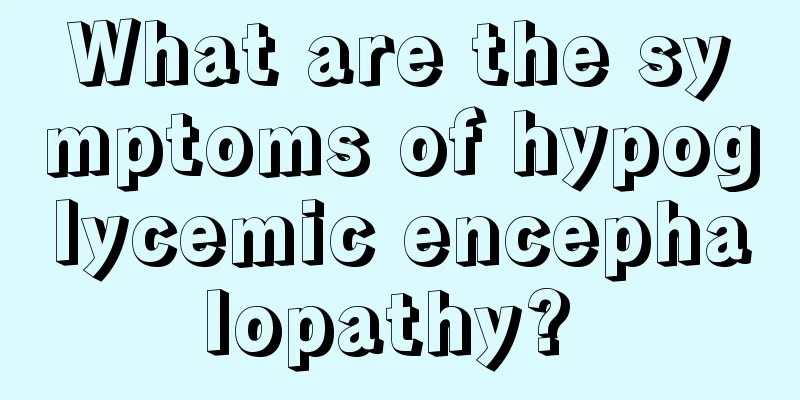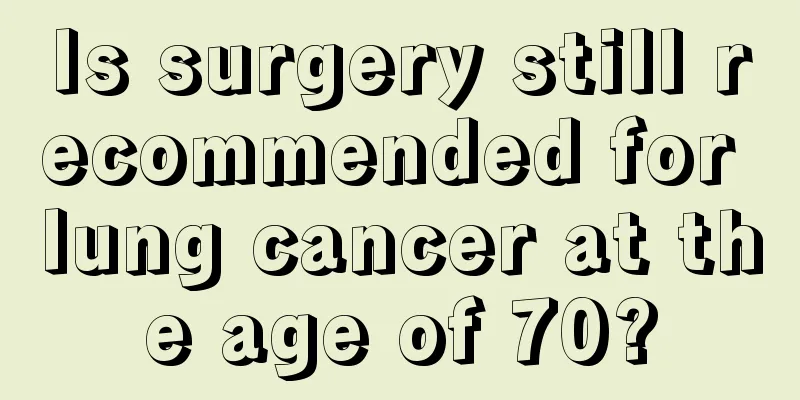What are the symptoms of hypoglycemic encephalopathy?

|
Hypoglycemic encephalopathy is mainly caused by damage to brain tissue due to severe hypoglycemia. Common clinical symptoms include sweating, tremors or blurred vision, and pale complexion. Therefore, people who often show these symptoms must pay attention to them. 1. Pathology Glucose is the main source of energy for the brain, especially the cerebrum, but the ability of brain cells to store glucose is very limited and can only maintain the energy needs of brain activity for a few minutes. Therefore, the main source of energy for the brain is blood sugar. Prolonged severe hypoglycemia can seriously damage brain tissue. In the early stages of sugar deficiency in the brain tissue, congestion and multiple hemorrhagic ecchymoses may occur; then, due to damage to the Na+-K+ pump in the brain cell membrane, a large amount of Na+ enters the brain cells, followed by cerebral edema and punctate necrosis of the brain tissue; in the late stages, nerve cells necrotize and disappear, resulting in softening of the brain tissue. Different parts of the nervous system have different sensitivities to hypoglycemia. The cerebral cortex, hippocampus, cerebellum, caudate nucleus and globus pallidus are the most sensitive, followed by the cranial nerve nuclei, thalamus, hypothalamus and brainstem. The spinal cord is less sensitive. The damage caused by hypoglycemia to the brain is similar to that caused by ischemic brain damage, but not exactly the same. However, severe hypoglycemia is often accompanied by a decrease in the brain's oxygen uptake rate, which makes the brain less tolerant to hypoxia and can further aggravate the damage of hypoglycemia to the brain. 2. Clinical manifestations 1. Sympathetic nerve excitement symptoms The main symptoms include sweating, trembling, blurred vision, hunger, weakness and tension, pale complexion, palpitations, nausea, vomiting and cold limbs. 2. Symptoms of brain hypoxia and sugar deficiency The main symptoms are headache, dizziness and forgetfulness. Mental disorder, gradual loss of orientation and memory, fear, panic, hallucinations and mania, etc. There may be clonic, choreiform or childish movements, tachycardia, mydriasis, positive pyramidal tract signs, etc. Patients may experience epileptic symptoms, confusion, drowsiness, or even coma, and may even experience deep coma, decerebrate rigidity, disappearance of various reflexes, shallow and weak breathing, decreased blood pressure, and pupil constriction. If the brain tissue is in a severe hypoglycemic state for a long time, it will be difficult for the patient to recover. Patients often suffer from symptoms such as memory loss, intellectual impairment, mental disorder or personality change. Unexplained idiopathic (or functional) hypoglycemia often occurs in children around 10 years old. |
<<: Treatment method for vascular headache, this method is so effective
>>: Chicken gizzard skin is so effective in treating gallstones
Recommend
How to remove yellow stains from collars
Yellow stains are a relatively common situation. ...
What is the most effective way to treat physical weakness and excessive sweating?
Physical weakness and excessive sweating is a com...
What can be used to wash off dried blood stains
In daily life, the clothes we wear or the sheets ...
Can I use ear drops for tinnitus?
Tinnitus is a common symptom that can cause parti...
Can eating lettuce help enlarge breasts?
If you want to effectively enlarge your breasts, ...
What medicine is good for throat cancer
What medicine is good for throat cancer? The best...
Can kidney cancer be transmitted by eating together in the late stage?
Can kidney cancer be transmitted by sharing food?...
What disease is it that causes red spots on the skin that do not hurt or itch
Skin diseases are very common in clinical practic...
Can severe osteosarcoma be cured?
Osteosarcoma is a tumor disease that makes people...
Calories of rock sugar
We often hear about foods made with rock sugar, s...
Oil fume pipe cleaning and maintenance methods
For our kitchen, we usually use range hoods, whic...
What are the early symptoms of liver cancer? Introduction to the scientific diagnostic criteria for liver cancer
Liver cancer is difficult to treat because its ea...
Why does my throat feel stuck after taking diet pills?
Losing weight is a very popular thing in life, be...
Treatment of pituitary tumors
Treatments for pituitary tumors mainly include me...
What to do if my ear is scratched and water is flowing
Ears are one of the five senses that we cannot ig...









